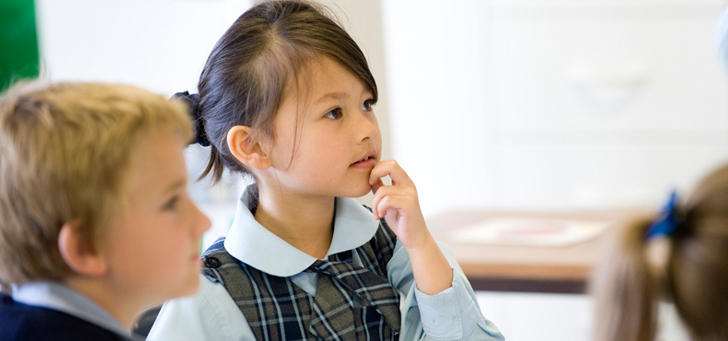
Our schools use the Australian Curriculum as the basis for their teaching and learning programs. It is the foundation for high quality teaching to meet the needs of all Australian students. From January 2016 Catholic schools in South Australia will use version 8.0 of the Australian Curriculum.
The Australian Curriculum sets out the core knowledge, understanding and skills important for all Australian students and describes the learning entitlement of students as a foundation for their future learning, growth and active participation in the community.
It sets out, through content descriptions and achievement standards, what students should be taught and achieve as they progress through school.
The Australian Curriculum is arranged into eight learning areas: English, Mathematics, Science, Humanities and Social Sciences, The Arts, Technologies, Health and Physical Education and Languages.
It also pays explicit attention to how seven general capabilities and three cross-curriculum priorities contribute to, and can be developed through each learning area.
The seven general capabilities are literacy, numeracy, information and communication technology capability, critical and creative thinking, personal and social capability, ethical understanding, and intercultural understanding. Learning continua are available for each capability, which describe the relevant knowledge, skills, behaviours and dispositions at particular points of schooling.
The Australian Curriculum focuses on three cross-curriculum priorities: Aboriginal and Torres Strait Islander histories and cultures, Asia and Australia’s engagement with Asia, and sustainability.
English helps create confident communicators, imaginative thinkers and informed citizens.
It is through the study of English that individuals learn to analyse, understand, communicate with and build relationships with others and with the world around them.
Mathematics provides students with essential mathematical skills and knowledge in Number and Algebra, Measurement and Geometry, and Statistics and Probability.
It develops the numeracy capabilities that all students need in their personal, work and civic life, and provides the fundamentals on which mathematical specialties and professional applications of mathematics are built.
Through each of the various Australian Curriculum languages, students acquire communication skills in the language being learnt, an intercultural capability, an understanding of the role of language and culture in communication and a capability for reflection on language use and language learning.
Science provides opportunities for students to develop an understanding of important science concepts and processes, the practices used to develop scientific knowledge, of science’s contribution to our culture and society, and its applications in our lives.
Humanities and Social Sciences consist of four subjects – History, Geography, Civics and Citizenship and Economics and Business.
Each of the four subjects comprises both a knowledge and understanding strand and a skills strand particular to the subject discipline.
In Health and Physical Education students develop the knowledge, understanding and skills to support them to be resilient, to develop a strong sense of self, to build and maintain satisfying relationships, to make health-enhancing decisions in relation to their health and physical activity participation, and to develop health literacy competencies in order to enhance their own and others’ health and wellbeing.
The five Arts subjects in the Australian Curriculum are Dance, Drama, Media Arts, Music, and Visual Arts.
Together they provide opportunities for students to learn how to create, design, represent, communicate and share their imagined and conceptual ideas, emotions, observations and experiences.
Technologies describes two distinct but related subjects.
In Design and Technologies students use design thinking and technologies to generate and produce design solutions for authentic needs and opportunities.
In Digital Technologies students use computational thinking and information systems to define, design and implement digital solutions.